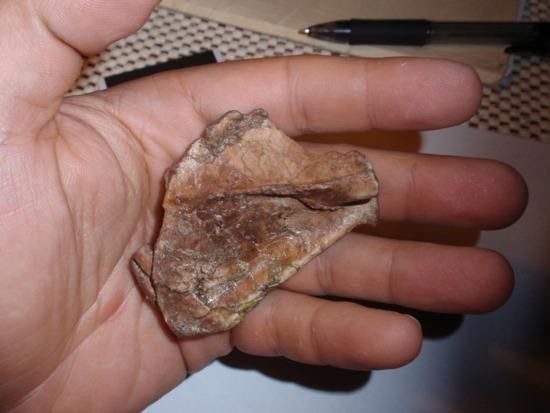Fossilized Shoulder Reveals Early Hominids Climbed Trees
The shoulder blades of a 3.3-million-year-old Australopithecus afarensis child suggest the species spent at least some time in the treetops
/https://tf-cmsv2-smithsonianmag-media.s3.amazonaws.com/filer/3e/d4/3ed45497-0111-4282-a898-79743cdd0fe9/picresized_1351043326_green1hr.jpg)
The most famous Australopithecus afarensis skeleton is named for the Beatles’ “Lucy in the Sky with Diamonds.” But a better anthem for the species might be “Lucy in the Trees with Chimpanzees.” A new study investigating how A. afarensis‘ shoulders grew during childhood indicate the early hominid spent at least some of its time climbing in trees. The work, published online today in Science, adds another bit of evidence to a decades-long debate about how Lucy and her kind traveled through their environment.
There’s no question that A. afarensis, which lived about 3.85 million to 2.95 million years ago, walked upright on two legs. The species possessed numerous physical features associated with bipedalism, such as thighs that angled in toward the knees and arched feet that lacked the grasping big toes seen in tree-climbing apes. But the hominid also had characteristics that are normally found in arboreal apes, such as curved fingers and toes, which are useful for gripping tree limbs. So the controversial question has been: Did A. afarensis actually climb trees? Or were the so-called climbing traits just evolutionary holdovers that the species didn’t use but hadn’t lost yet?
The new study takes a novel route in addressing these questions, looking at the development of the shoulder blades in A. afarensis. David Green of Midwestern University in Downers Grove, Illinois, and Zeresenay Alemseged of the California Academy of Sciences began by carefully liberating the left and right shoulder blades from the block of rock holding together the Dikika Child, a 3-year-old A. afarensis that lived about 3.3 million years ago. The fossil was unearthed in Ethiopia between 2000 and 2003, and it’s taken this long to remove the delicate shoulder blades, which are a rare find in the hominid fossil record.

The pair compared the Dikika Child’s shoulder bones with those of a few adult A. afarensis specimens, as well as those of juvenile and adult shoulders from other Australopithecus species, Homo erectus, modern humans and modern apes. By comparing children to adults, the researchers could assess how the size and shape of the shoulder blade changed as a young A. afarensis grew up. In chimpanzees and gorillas, the shoulder blade develops in a characteristic way because frequent climbing during childhood affects how the shoulder grows—in other words, the apes’ shoulders change as a result of climbing. The shoulders of modern humans and H. erectus look very different and have their own growth trajectory because neither species spends any significant time climbing during childhood and adolescence (playing on “monkey” bars doesn’t count). In the new research, Green and Alemseged conclude the shoulder of A. afarensis developed in the same manner as an African ape’s, indicating the early hominid must have spent at least some time climbing in trees.
That doesn’t mean swinging through the treetops was A. afarensis‘ preferred mode of locomotion. In the past, paleoanthropologists have suggested that Lucy’s small size (she was no bigger than a chimp) made her vulnerable to leopards and other hungry predators. So while the hominid might have spent most of its time walking upright on the ground, at night it might have taken shelter in trees—perhaps making a nest as many chimpanzees do.
/https://tf-cmsv2-smithsonianmag-media.s3.amazonaws.com/accounts/headshot/science-erin-wyman-240.jpg)
/https://tf-cmsv2-smithsonianmag-media.s3.amazonaws.com/accounts/headshot/science-erin-wyman-240.jpg)